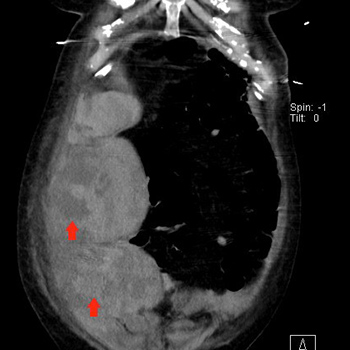Keywords
Enoxaparin, spontaneous hematomas, anticoagulation side effect
Abstract
Enoxaparin is indicated for the treatment or prevention of many clinical disorders including deep vein thromboembolism, atrial fibrillation and mechanical valve thrombosis. It is one of the most commonly prescribed drugs in hospitals. However, haemorrhagic complications can occur, particularly in the elderly, patients with renal function impairment and patients with a very high or very low body weight. The authors describe the cases of three patients who had one or more risk factors for haemorrhagic complications, such as abdominal haematomas. The clinical presentation was similar in all three cases, with sudden-onset abdominal pain, an altered state of consciousness and hypotension. In all cases, investigation showed acute anaemia and large abdominal haematomas on imaging studies. A conservative approach was taken in the three patients, with suspension and reversal of anticoagulation, fluid resuscitation and red blood cell transfusion. Haemodynamic stability was achieved in two of the patients, but the third patient died.
The authors consider it is important to present these case reports because of the widespread use of enoxaparin, and the need for rigorous dose adjustment for renal function variations and body weight. We hope this article raises awareness of haemorrhagic complications in high-risk groups and propose protocols are introduced for dose adjustment and monitoring the efficacy of enoxaparin.
References

Views: 1188
HTML downloads: 125
PDF downloads: 536
Published:
2018-12-10
Issue:
Vol 5 No 12
(view)










